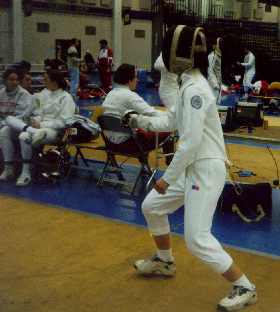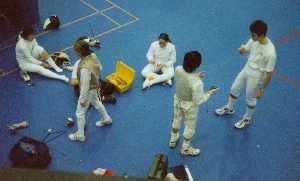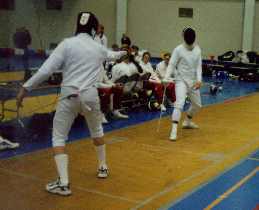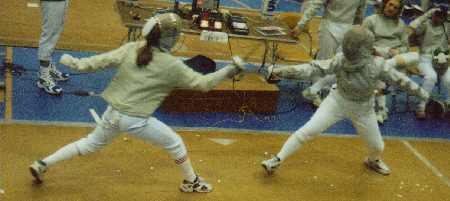|
 Fencing has a long and glorious history, dating back to the time when an unknown barbarian found a way to make a longer knife so he would have an easier time killing people. The sword took many forms over time, from the short Roman gladius to the massive two-handed Scottish claymore. Eventually, as the world became more civilized and the technology of killing people became more advanced, the sword lost most of its military significance and became a more private method of settling disputes between noblemen, as dualing became popular. Eventually, since nobles were not any more fond of dying than ordinary foot soldiers, they developed rules to limit the number of fatalities in fencing duals, and sport fencing as we know it began to emerge. Fencing has a long and glorious history, dating back to the time when an unknown barbarian found a way to make a longer knife so he would have an easier time killing people. The sword took many forms over time, from the short Roman gladius to the massive two-handed Scottish claymore. Eventually, as the world became more civilized and the technology of killing people became more advanced, the sword lost most of its military significance and became a more private method of settling disputes between noblemen, as dualing became popular. Eventually, since nobles were not any more fond of dying than ordinary foot soldiers, they developed rules to limit the number of fatalities in fencing duals, and sport fencing as we know it began to emerge.
Today, fencing takes place on a long, narrow strip and is scored electronically. The strip is usually made of copper or another conductive matterial so that a fencer who accidentally hits the floor won't cause any confusion. A scoring box illuminates lights to tell the director when one of the contenders has scored a touch. A device called a reel sits at each end of the strip, letting out and reeling in a wire connected to the fencer on the corresponing side of the strip and linking his or her weapon to the scoring box. A scoring box illuminates lights to tell the director when one of the contenders has scored a touch. A device called a reel sits at each end of the strip, letting out and reeling in a wire connected to the fencer on the corresponing side of the strip and linking his or her weapon to the scoring box.
Currently, I am fencing epee on the Case Western Reserve University men's fencing team. Recently, I brought along a camera loaded with 800-speed film to a tournament at Notre Dame so I could (finally) illustrate the action and spirit of the sport on my website. Read on for details of the individual weapons and more photography.
 The three weapons in fencing: The three weapons in fencing:
 
| 

